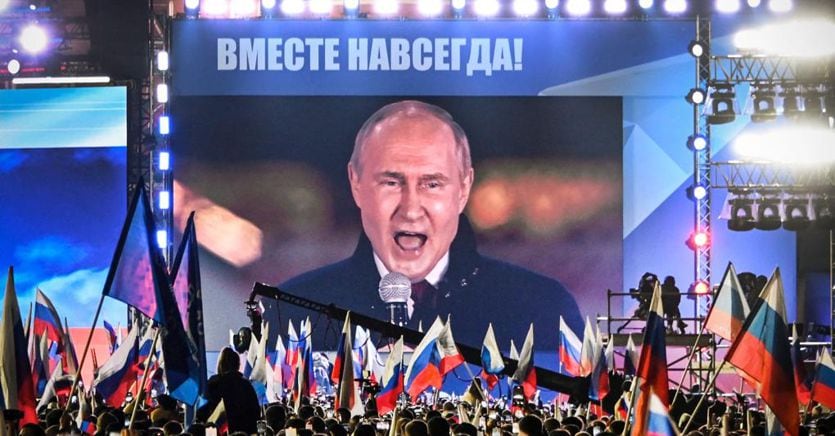So this is the perimeter of “Novorussia”, from the 18% (including Crimea) of Ukraine that Putin was satisfied with. Going back to the end of the Soviet Union, the Russian president said that “tragedy” is now a part of the past, and “not what we aim for.” Only now is the decision of “the millions of people who consider themselves part of Russia by faith, culture, values and language: there is nothing stronger than their decision to return to their historical homeland.”
But far from the ways in which the so-called referendums took place, the celebration in the Kremlin and then the concert on Red Square at the end of the day hides a completely different situation on the battlefield. In the Zaporizhia region, a Russian missile attack hit a convoy of civilian cars on its way to Kherson. The death toll was 25 dead and 74 wounded. And in the Donetsk region, the Russians continue to lose their land. The Lyman garrison in the north is half-encircled, with the Russians fleeing the nearby villages of Drubishev and Yampel.
Putin did not indicate the true direction of military operations, just as he did not mention the chaos in which the recruitment of reinforcements to be sent to Ukraine is taking place: a partial mobilization that has gone out of control, in many cases, with the Kremlin. To admit the confusion and mistakes made by zealous officials who, in order to reach the indicated quotas, did not take into account the limits of age, training or health. To reach paradoxes such as the Tuva district where the local administration rewards the families of those who agree to enlistment with rams, sacks of flour and coal.
The Ministry of Defense announced the arrival of the first reinforcements in Donbass: their task will be to defend the “liberated” lands, since the annexation to Russia will allow, among other things, the forced mobilization of Ukrainian citizens, as well as the extension of the “nuclear umbrella”. This is the most troubling question ahead: How will Moscow respond to the continuing Ukrainian assault on what has suddenly become the national territory of the Russians? In admonishing the West, Putin did not repeat the nuclear threats, but noted the precedent set by the United States, “the only country in the world that used nuclear weapons in war,” against Hiroshima and Nagasaki.
A short while ago, spokesman Dmitry Peskov emphasized that an attack on the four regions now would be considered aggression against Russia, and the main concern, of course, related to the possible deployment of tactical nuclear weapons, suitable for a more limited theater of war than strategic missiles. Movements for which the Americans have yet to record any preparations, Secretary of State Anthony Blinken confirmed yesterday. According to the Russian nuclear doctrine reviewed by Putin in 2020, in the absence of direct nuclear aggression, a nuclear response is still allowed in the event of a conventional attack on the critical infrastructure of the nuclear arsenal, or in the event of an attack any situation that threatens the survival of the Russian state.

“Freelance social media evangelist. Organizer. Certified student. Music maven.”



